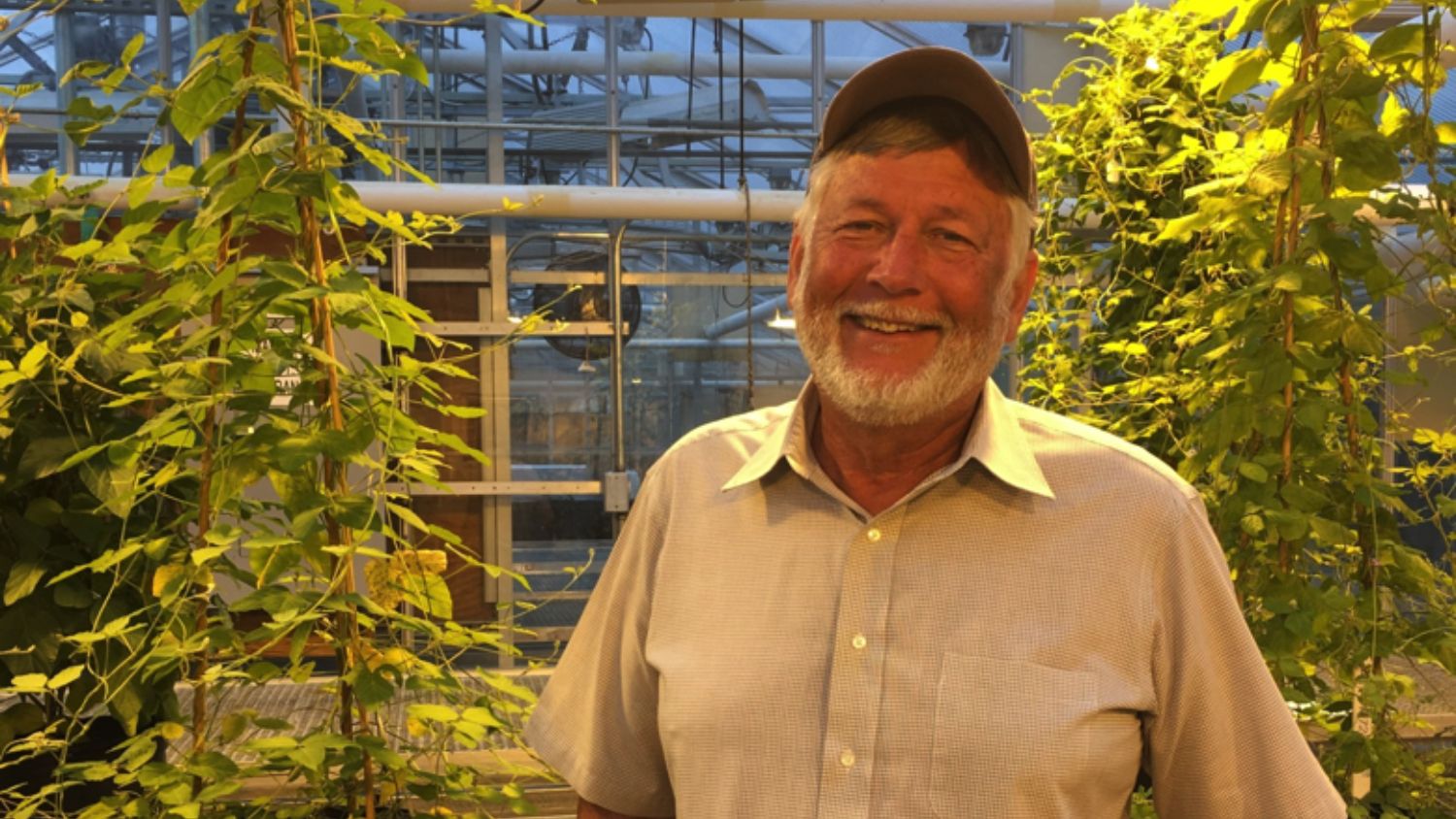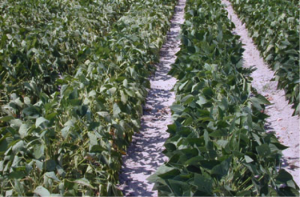Carter Leads Collaboration for High-Yielding, Drought-Resistant Soybeans

Dr. Tommy Carter is a U.S. Department of Agriculture scientist working with NC State University's Department of Crop and Soil Sciences.
Only a day of rain could bring Dr. Tommy Carter in from the research fields to his greenhouse on NC State University’s campus. This persevering dedication is largely responsible for his success in the research partnership that has resulted in the first drought-resistant soybean cultivar.
This recently introduced cultivar exhibits slow or delayed canopy wilting, sustained nitrogen fixation during drought stress, and a water-conserving transpiration response to drying air. It has become the basis for drought resistant breeding in the United States, and how it came to be is a success story Carter, a U.S. Department of Agriculture scientist and member of NC State’s Department of Crop and Soil Sciences, is happy to share.
“This has been such a true joint collaboration between NC State and the USDA,” Carter begins. He also acknowledges generous funding from the North Carolina Soybean Producers, the American Soybean Association and the United Soybean Board through the years of research.
“It’s a continuing process. When we started on this, there was basically nothing known about drought-tolerance in soybeans, so we’ve had to invent technology as we’ve gone along: how do you breed for it? We know how to measure certain aspects of how plants respond to stress. Plant physiologists have known how to do that, and [that knowledge is] getting better all the time. But how do you breed for drought tolerance? That’s something that we’ve had to build as we’ve gone along.”
The research began more than 30 years ago. “The first 15 years of this work was about screening the germplasm collection from around the world.” (Germplasm contains the information for a plant species’ makeup.) “We’d screen for the ones that looked interesting, then do the first round of breeding from them,” Carter says. “We started at square one, where there was nothing known.”
Carter recalls NC State personnel. “Gene Kamprath did a lot of consulting to get me up to speed. We want to include Doug Gross’s post doc work. But even before that, Jim Dunphy, soybean extension specialist, had his graduate student, Al Wood, looking at that variety.” Working with post doc Jim Cappy, Carter found that “there’s not much natural variation in cultivars farmers were growing for this trait, so we started to look at exotic materials and grow them on sand piles.”
1982 brought the first really systematic screening of a germplasm collection for resistance to drought, performed at the Clinton Horticultural Crops Research Station. “We were growing, testing there for a couple of years. … Then came a big drought during flowering time.”
A momentous day

Hundreds of soybean plants of various genotypes were exposed to the drought. “On the day we visited, all the plants were wilted — except for one genotype. The same was true in the two other fields of soybeans: only one genotype was standing healthy.” They were all reps of the same genotype.
A eureka moment?
“It was a momentous day. No doubt about it,” Carter says.
This soybean cultivar had an unusual response to drying air: most plants shrivel up, straining for more moisture; this one stayed healthy by conserving water within itself.
Enter Dr. Bob Patterson. “Bob taught me a lot about the physiology of plants and gave me a lot of ideas about how breeders can adapt what physiologists know about how to screen for drought tolerance. Jim Cappy and Doug Gross and I identified it as a soybean type from Japan: P(lant) I(ntroduction) 416937.
“Grad student Rick Sloan, Bob Patterson and I published the first paper about the unusual root system that characterized this PI. It was definitely slow wilting, had an unusual root system.
“In the late 90s, Tom Rufty got in the game with us; he started working with us on this PI. He’s a physiologist, figuring out the mechanism, which featured high aluminum response in acid subsoil response.
“We got a big shot in the arm 1999-2000. Tom Sinclair moved here, and we added other breeders and wound up being a kind of consortium of researchers.”
Expanding the study
The United Soybean Board provided funds to expand the study, so even more of the cultivars were screened until another resistant one was found, this time one from Nepal which had different mechanisms. Carter’s team started breeding both, with research conducted as parallel studies for a few years, then as one study which led to the new cultivar: the culmination of groundbreaking collaborative research by plant breeders and plant physiologists.
What’s next for this exceptional new cultivar?
It’s a non-GMO variety, so while it’s available as a commercial seed, it’s also finding a strong market as parental stock. “And there’s plenty of room to expand and continue the research,” Carter says.
After leading the way for others to continue cultivar research, Carter maintains a characteristically modest view of his achievement.
“I want to make a difference,” he says. “Turns out science has been fun. That’s what we do in agriculture. It’s science, but it also solves problems and at the end of the day, you’ve made a difference. That’s true of USDA as well as Crop and Soil Sciences. Do good science, but make a difference. That’s what I preach to my students.”
–Written by Kaki Carl
This post was originally published in College of Agriculture and Life Sciences News.